 W
W(242216) 2003 RN10 is the 16th largest potentially hazardous object discovered so far, and it is classified as a mid-sized Amor-class asteroid. With a diameter between 2 and 4.5 kilometers, it is larger than 99% of asteroids, making it comparable in size to Mount Everest.
 W
WThe Alcubierre drive, Alcubierre warp drive, or Alcubierre metric is a speculative idea based on a solution of Einstein's field equations in general relativity as proposed by Mexican theoretical physicist Miguel Alcubierre, by which a spacecraft could achieve apparent faster-than-light travel if a configurable energy-density field lower than that of vacuum could be created.
 W
WAn artificial uterus is a device that would allow for extracorporeal pregnancy by growing a fetus outside the body of an organism that would normally carry the fetus to term.
 W
WIn philosophy, the brain in a vat (BIV) is a scenario used in a variety of thought experiments intended to draw out certain features of human conceptions of knowledge, reality, truth, mind, consciousness, and meaning. It is an updated version of René Descartes's evil demon thought experiment originated by Gilbert Harman. Common to many science fiction stories, it outlines a scenario in which a mad scientist, machine, or other entity might remove a person's brain from the body, suspend it in a vat of life-sustaining liquid, and connect its neurons by wires to a supercomputer which would provide it with electrical impulses identical to those the brain normally receives. According to such stories, the computer would then be simulating reality and the "disembodied" brain would continue to have perfectly normal conscious experiences, such as those of a person with an embodied brain, without these being related to objects or events in the real world.
 W
WBrainwashing is the concept that the human mind can be altered or controlled by certain psychological techniques. Brainwashing is said to reduce its subjects' ability to think critically or independently, to allow the introduction of new, unwanted thoughts and ideas into their minds, as well as to change their attitudes, values and beliefs.
 W
WThe Bussard ramjet is a theoretical method of spacecraft propulsion proposed in 1960 by the physicist Robert W. Bussard, popularized by Poul Anderson's novel Tau Zero, Larry Niven in his Known Space series of books, Vernor Vinge in his Zones of Thought series, and referred to by Carl Sagan in the television series and book Cosmos.
 W
WA cloaking device is a hypothetical or fictional stealth technology that can cause objects, such as spaceships or individuals, to be partially or wholly invisible to parts of the electromagnetic (EM) spectrum. However, over the entire spectrum, a cloaked object scatters more than an uncloaked object.
 W
WThe Dean drive was a device created and promoted by inventor Norman Lorimer Dean (1902–1972) that he claimed to be a reactionless drive. Dean claimed that his device was able to generate a uni-directional force in free space, in violation of Newton's third law of motion from classical physics. His claims generated notoriety because, if true, such a device would have had enormous applications, completely changing human transport, engineering, space travel and more. Dean made several controlled private demonstrations of a number of different devices; however, no working models were ever demonstrated publicly or subjected to independent analysis and Dean never presented any rigorous theoretical basis for their operation. Analysts conclude that the motion seen in Dean's device demonstrations was likely reliant on asymmetrical frictional resistance between the device and the surface on which the device was set, resulting in the device moving in one direction when in operation, driven by the vibrations of the apparatus.
 W
WA Dyson sphere is a hypothetical megastructure that completely encompasses a star and captures a large percentage of its power output. The concept is a thought experiment that attempts to explain how a spacefaring civilization would meet its energy requirements once those requirements exceed what can be generated from the home planet's resources alone. Only a tiny fraction of a star's energy emissions reach the surface of any orbiting planet. Building structures encircling a star would enable a civilization to harvest far more energy.
 W
WA radio frequency (RF) resonant cavity thruster is a device concept that is claimed to be a spacecraft thruster. It is purported to generate thrust by reflecting microwaves internally in the device, in violation of the law of conservation of momentum and other laws of physics. The device is also known as an EmDrive and has been often referred to by the media as the Impossible Drive. It was introduced in 2001 by Roger Shawyer.
 W
WET3 Global Alliance is an American open consortium of licensees dedicated to global implementation of Evacuated Tube Transport Technologies (ET3). It was founded by Daryl Oster in 1997 with the goal of establishing a global transportation system utilizing car-sized cargo and passenger capsules traveling in 1.5m diameter tubes via frictionless superconductive maglev.
 W
WAn HIV vaccine can be either a preventive vaccine or a therapeutic vaccine, which means it can either protect individuals from being infected with HIV or treat HIV-infected individuals. And it can either induce an immune response against HIV or consist of preformed antibodies against HIV.
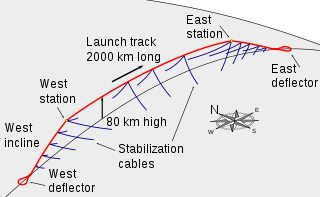 W
WA launch loop, or Lofstrom loop, is a proposed system for launching objects into orbit using a moving cable-like system situated inside a sheath attached to the Earth at two ends and suspended above the atmosphere in the middle. The design concept was published by Keith Lofstrom and describes an active structure maglev cable transport system that would be around 2,000 km (1,240 mi) long and maintained at an altitude of up to 80 km (50 mi). A launch loop would be held up at this altitude by the momentum of a belt that circulates around the structure. This circulation, in effect, transfers the weight of the structure onto a pair of magnetic bearings, one at each end, which support it.
 W
WA malaria vaccine is a vaccine that is used to prevent malaria. The only approved vaccine as of 2015 is RTS,S, known by the trade name Mosquirix. It requires four injections, and has a relatively low efficacy. Due to this low efficacy, the World Health Organization (WHO) does not recommend the routine use of the RTS,S vaccine in babies between 6 and 12 weeks of age.
 W
WMind uploading, also known as whole brain emulation (WBE), is the hypothetical futuristic process of scanning a physical structure of the brain accurately enough to create an emulation of the mental state and copying it to a computer in a digital form. The computer would then run a simulation of the brain's information processing, such that it would respond in essentially the same way as the original brain and experience having a sentient conscious mind.
 W
WAn orbital ring is a concept of an enormous artificial ring placed around the Earth that rotates at an angular rate that is faster than the rotation of the Earth.
 W
WPerpetual motion is the motion of bodies that continues forever. A perpetual motion machine is a hypothetical machine that can do work infinitely without an energy source. This kind of machine is impossible, as it would violate the first or second law of thermodynamics.
 W
WProject Forward was launched in 2011 with the purpose of exploring beamed energy propulsion. The project aims to analyze and assess past beamed-powered concepts, describe the construction of sail designs, and provide a starsail system concept. Challenges include lossy divergence of the beam as well as sail design at feasible sizes.
 W
WProject Hyperion was launched in December 2011 by Icarus Interstellar. The main objective of the project is to define integrated concepts for a crewed interstellar spacecraft. The two-year study aims to assess the feasibility of manned interstellar flights using current and near-term technologies. It also aims to guide research and technology development plans as well as to inform the public about crewed interstellar travel.
 W
WA quantum vacuum thruster is a theoretical system hypothesized to use the same principles and equations of motion that a conventional plasma thruster would use, namely magnetohydrodynamics (MHD), to make predictions about the behavior of the propellant. However, rather than using a conventional plasma as a propellant, a QVT would interact with quantum vacuum fluctuations of the zero-point field.
 W
WA rocket sled launch, also known as ground-based launch assist, catapult launch assist, and sky-ramp launch, is a proposed method for launching space vehicles. With this concept the launch vehicle is supported by an eastward pointing rail or maglev track that goes up the side of a mountain while an externally applied force is used to accelerate the launch vehicle to a given velocity. Using an externally applied force for the initial acceleration reduces the propellant the launch vehicle needs to carry to reach orbit. This allows the launch vehicle to carry a larger payload and reduces the cost of getting to orbit. When the amount of velocity added to the launch vehicle by the ground accelerator becomes great enough, single-stage-to-orbit flight with a reusable launch vehicle becomes possible.
 W
WSolar One is a proposed spacecraft that would combine beamed-powered propulsion, electromagnetic propulsion, and nuclear propulsion. The spacecraft would include a light sail, a laser system, a Bussard scoop, and a compact nuclear fusion reactor. Large mirrors would be assembled in orbit and sent close to the Sun to collect sufficient light to propel the light sail. The on board laser would help the Bussard scoop collect hydrogen to power the nuclear reactor which, in turn, would power both the laser and the electromagnetic scoop to decelerate the spacecraft. The main challenges are building large parabolic mirrors as well as reducing the weight of the on board laser system and compact nuclear reactor.
 W
WA space elevator is a proposed type of planet-to-space transportation system. The main component would be a cable anchored to the surface and extending into space. The design would permit vehicles to travel along the cable from a planetary surface, such as the Earth's, directly into space or orbit, without the use of large rockets. An Earth-based space elevator would consist of a cable with one end attached to the surface near the equator and the other end in space beyond geostationary orbit. The competing forces of gravity, which is stronger at the lower end, and the outward/upward centrifugal force, which is stronger at the upper end, would result in the cable being held up, under tension, and stationary over a single position on Earth. With the tether deployed, climbers could repeatedly climb the tether to space by mechanical means, releasing their cargo to orbit. Climbers could also descend the tether to return cargo to the surface from orbit.
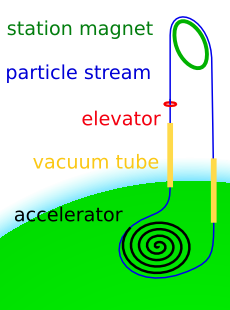 W
WA space fountain is a proposed form of an extremely tall tower extending into space. As known materials cannot support a static tower with this height, a space fountain has to be an active structure: A stream of pellets is accelerated upwards at a ground station. At the top it is deflected downwards. The necessary force for this deflection supports the station at the top and payloads going up the structure. Spacecraft could launch from the top without having to deal with the atmosphere. This could reduce the cost of placing payloads into orbit. As downside the tower will collapse if the containment systems fail and the stream is broken. This risk could be reduced by several redundant streams.
 W
WSpace tethers are long cables which can be used for propulsion, momentum exchange, stabilization and attitude control, or maintaining the relative positions of the components of a large dispersed satellite/spacecraft sensor system. Depending on the mission objectives and altitude, spaceflight using this form of spacecraft propulsion is theorized to be significantly less expensive than spaceflight using rocket engines.
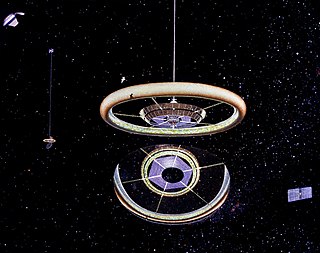 W
WThe Stanford torus is a proposed NASA design for a space habitat capable of housing 10,000 to 140,000 permanent residents.
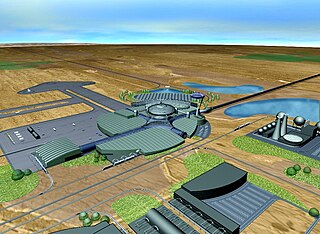 W
WStarTram is a proposed space launch system propelled by maglev. The initial Generation 1 facility would launch cargo only, launching from a mountain peak at an altitude of 3 to 7 kilometres with an evacuated tube staying at local surface level; it has been claimed that about 150,000 tons could be lifted to orbit annually. More advanced technology would be required for the Generation 2 system for passengers, with a longer track instead gradually curving up at its end to the thinner air at 22 kilometres (14 mi) altitude, supported by magnetic levitation, reducing g-forces when each capsule transitions from the vacuum tube to the atmosphere. A SPESIF 2010 presentation stated that Generation 1 could be completed by the year 2020 or later if funding began in 2010, and Generation 2 by 2030 or later.
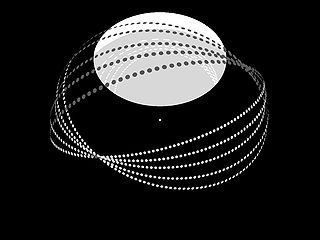 W
WStellar engines are a class of hypothetical megastructures which use a star's radiation to create usable energy. The concept has been introduced by Badescu and Cathcart. Some variants use this energy to produce thrust, and thus accelerate a star, and anything orbiting it, in a given direction. The creation of such a system would make its builders a Type-II civilization on the Kardashev scale.
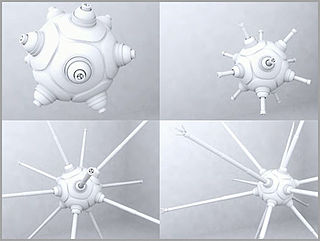 W
WUtility fog is a hypothetical collection of tiny robots that can replicate a physical structure. As such, it is a form of self-reconfiguring modular robotics.
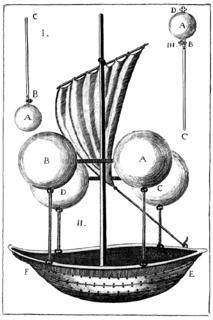 W
WA vacuum airship, also known as a vacuum balloon, is a hypothetical airship that is evacuated rather than filled with a lighter-than-air gas such as hydrogen or helium. First proposed by Italian Jesuit priest Francesco Lana de Terzi in 1670, the vacuum balloon would be the ultimate expression of lifting power per volume displaced.
 W
WThe White–Juday warp-field interferometer is an experiment designed to detect a microscopic instance of a warping of spacetime. If such a warp is detected, it is hoped that more research into creating an Alcubierre warp bubble will be inspired. A research team led by Harold "Sonny" White in collaboration with Dr. Richard Juday at the NASA Johnson Space Center and Dakota State University was conducting experiments, but results were inconclusive.
 W
WThe Woodward effect, also referred to as a Mach effect, is part of a hypothesis proposed by James F. Woodward in 1990. The hypothesis states that transient mass fluctuations arise in any object that absorbs internal energy while undergoing a proper acceleration. Harnessing this effect could generate a reactionless thrust, which Woodward and others claim to measure in various experiments.